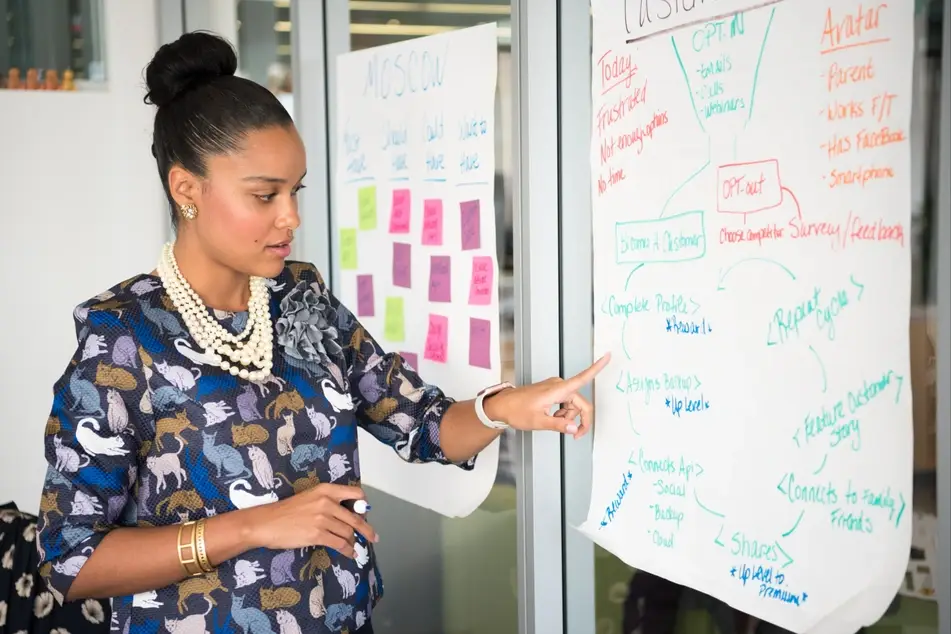A Learning Environment | Implementing Universal Design Learning at Work

If you work in education, you are likely already aware of universal design learning (UDL), a framework that is integral in the creation of inclusive classrooms. Rooted in learning science, UDL is about providing multiple entry points for people to access, engage with, and digest information. The goal is to ensure no one gets left behind.
But given its focus on inclusivity, UDL can have a far wider reach than the school setting. Applying UDL principles in the workplace, for example, can make it a more accessible, equitable, and engaging environment for employees and clients alike.
What is UDL?
UDL is rooted in an important question for educators: Who gets left behind when we take a one-size-fits-all approach?
The foundations of UDL were developed in the 1980s by a group of educational researchers seeking to improve student experiences and, with the help of technology, enhance learning opportunities for people with disabilities. By acknowledging and celebrating diverse backgrounds, needs, competencies and interests, UDL aims to create multiple, individualized pathways for people to absorb and respond to information.
It turns out that taking into account what may prevent someone from accessing a space or understanding a concept leads to the clearer and more streamlined design of spaces and materials. Removing barriers and maximizing opportunities for engagement benefits all of us.
So how can these guidelines translate to the workplace? If employed with careful consideration, UDL concepts can help you better facilitate meetings and projects in ways that consider, respect, and accommodate the individual needs of your team members.
Removing barriers and maximizing opportunities for engagement benefits all of us.
Why it matters in the workplace
Chances are your organization is committed to diversity, equity, and inclusion (DEI), at least in some capacity. Implementing and upholding UDL guidelines and theories helps your organization offer a more inclusive space that fosters a sense of belonging for employees and the people you serve. In short, it promotes better understanding, communication, and engagement.
UDL helps get everyone on the same page in understanding institutional missions and procedures, and reduces the likelihood of misinterpretation or disengagement. Taking time to anticipate the potential needs and circumstances of individuals who could join your team or seek your services will help you be ready to offer an environment that is accessible to all. Finally, UDL is efficient; if you prioritize accessibility from the beginning, it’s less likely that you’ll have to correct or redesign projects, materials, spaces, and more down the line.
Where to start
It’s helpful to consider a concrete example of how a UDL-informed workplace may differ from a traditional work setting.
Example: an employee who is an English-language learner attends an onboarding orientation.
- Traditional: The employee will reach out to the presenters to see if transcripts from their presentations can be shared
- UDL-informed: All onboarding employees will be offered slides, transcripts, and digital ways to review and revisit the presentations. PowerPoint slides are complemented with descriptions of images used, large-print handouts, captions, audio, and whatever else may help others digest the information shared independently. This method accommodates various learning styles, language proficiencies, and disabilities.
As you create opportunities for information to be shared in multiple ways, focus on these three main principles:
- Engagement. This principle calls on organizations to consider that employees and clients are motivated by different factors. Some employees may be willing to work in any role at an institution that supports prison reform, while others are keen to develop their fundraising skills and are less concerned with the organizational mission. Take time to learn why your employees continue to work at your organization, and see what how you can connect their motivation to your organizational and departmental aims.
- Representation. To support various knowledge acquisition styles, be sure to always provide information in multiple formats. This could mean offering verbal, recorded, visual, and written versions of info, and having materials available in print and digital formats.
- Action and expression. Offer multiple ways to engage with information and report learning. This allows individuals to understand concepts in their own words, and discourages the memorizing of a concept when its meaning hasn’t been fully digested. For example, allow employees to share their team’s highlights in a presentation or audio format, instead of only in a written report.
Take time to identify barriers that exist, and consider whether there are any you’re in a position to eliminate. What is your organization’s process for requesting workplace accommodations? Do employees feel safe and confident speaking up for themselves?
If you have potential solutions that could dismantle obstacles and increase accessibility, take note and speak to your supervisor or someone in a decision-making capacity. By following UDL principles at work, you help create a culture and environment that respect and accommodate the people within it, and would be a welcome relief to clients and employees alike.
***
Have you used the UDL framework in a professional setting? Let us know on Facebook!
Sheena Daree Miller is based in Brooklyn and divides her time between working in faculty development at a university and managing a black heritage center at a library. She is committed to promoting equity, with an emphasis on supporting graduating students and career changers.


